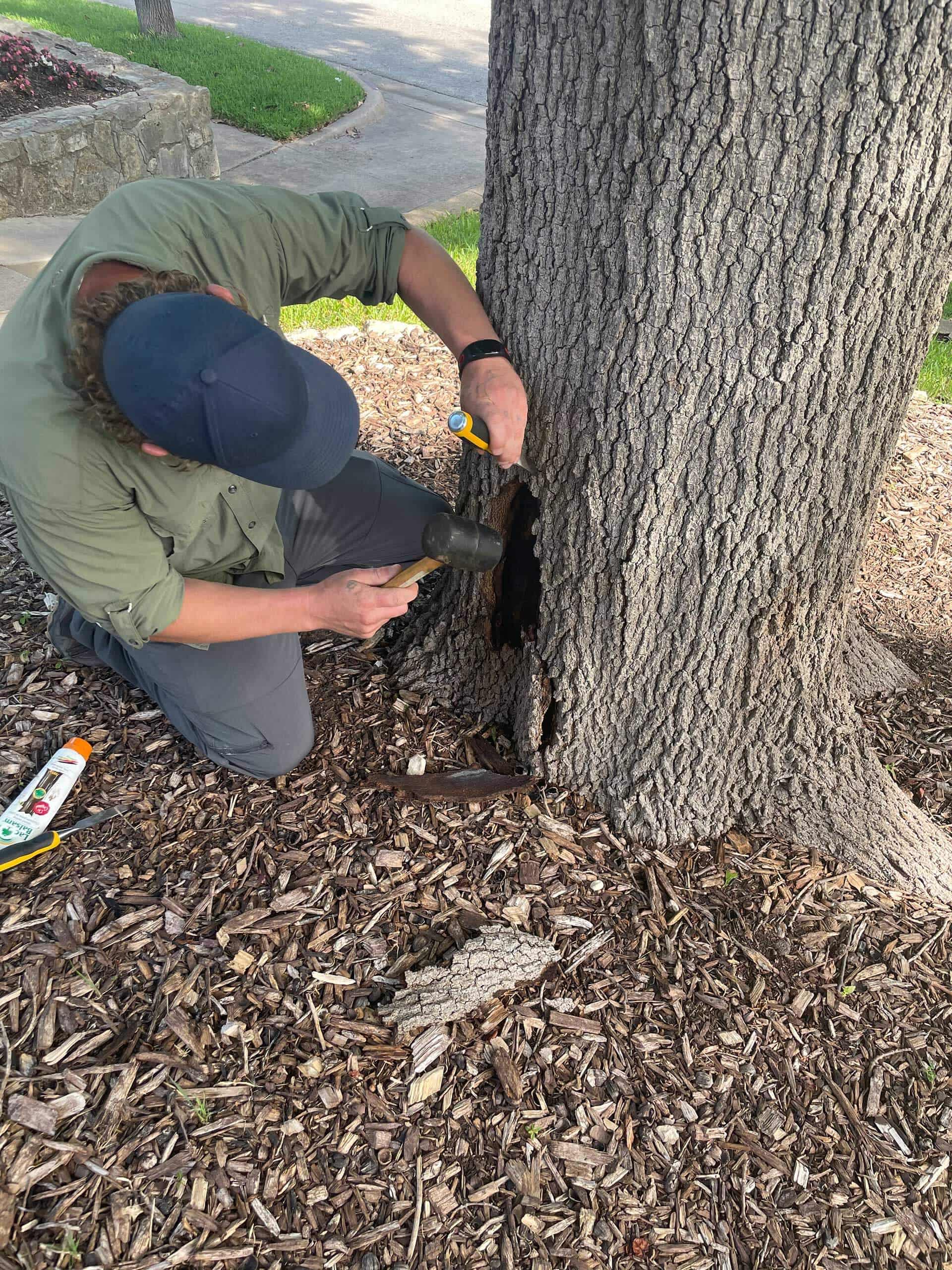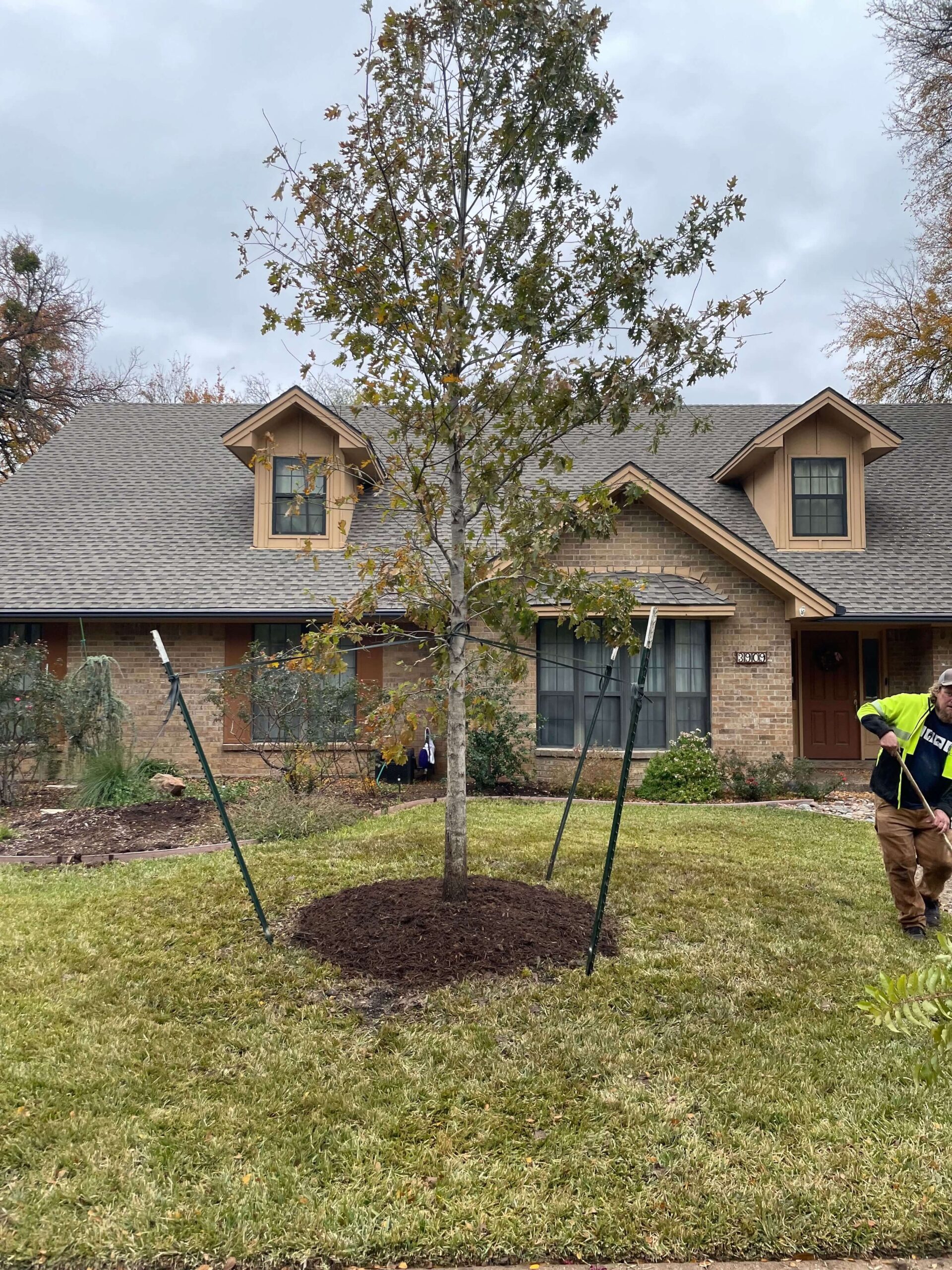Healthy trees start with proper care, and the two common problems that can harm your trees include:

Our certified arborists use air spading to safely remove buildup soil and excess mulch around the tree’s base. This advanced tool clears soil and mulch without damaging sensitive roots. This professional root flare excavation ensures your tree thrives and stays healthy.
If you notice your tree’s root flare is buried, contact us today or call 817-975-0180 for professional tree care.

Exposing the root flare is necessary for the health and longevity of your tree. It helps:

For 20 years, we’ve been Fort Worth’s leading company for root flare exposure. Here’s why:
Our clients love the difference we make. Here’s what they are saying:
If soil is covering your tree’s root flare, don’t wait! We provide professional and affordable root flare correction in Fort Worth, TX. We also serve the Benbrook, Aledo, and Weatherford areas. Call 817-975-0180 or contact us online to book your appointment.
Us
Them
The root flare is the area where the trunk of a tree widens and transitions into the roots. It’s a critical part of the tree’s anatomy, providing stability and facilitating nutrient uptake.
Proper root flare exposure is crucial for the health and longevity of a tree. It allows the tree to breathe, absorb nutrients, and develop a strong root system, which improves its overall stability and resistance to disease.
The entire root flare should be visible above the ground. This means that the point where the trunk begins to flare out should not be buried in soil or mulch.
Exposed roots are a natural part of a tree’s structure, especially in the root flare area. It’s actually beneficial for the roots in this area to be exposed to air and sunlight. However, if you notice significant root exposure further away from the trunk, it could be a sign of soil erosion or other issues that may need to be addressed.
If your tree’s trunk looks like a telephone pole sticking straight out of the ground, it likely has a buried root flare. Other signs of a problem include poor growth, declining health, and the presence of fungal fruiting bodies near the base of the tree.
While minor adjustments can be made by gently removing soil or mulch, it’s best to consult a certified arborist for root flare correction. They have the expertise and tools to safely expose the root flare without damaging the tree.
Ignoring a buried root flare can lead to a variety of problems, including root rot, girdling roots, and ultimately, the decline and death of the tree. Addressing the issue promptly can save your tree and prevent costly removal in the future.